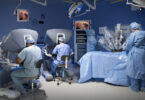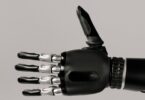A myocardial infarction is a pathology that occurs when the heart stops receiving the blood supply it needs.
As a result, oxygen stops reaching the myocardium and cells that do not receive that oxygen-rich blood begin to die.
Atherosclerosis is progressively occurring, and is aggravated by different risk factors such as hypertension, high cholesterol, smoking, obesity and sedentary lifestyle.
Similarly, the World Health Organization (WHO) emphasizes that both heart attacks and strokes are often caused by a combination of risk factors such as smoking, unhealthy diets, obesity, physical inactivity. , the harmful consumption of alcohol, high blood pressure, diabetes and the high presence of fats in the blood.
Cardiologists insist on the importance of recognizing the symptoms, because their lives can depend on it. However, this entity states that 80% of myocardial infarctions and cerebral vascular accidents can be prevented. Healthy diet, regular physical activity and smoking cessation are essential. Verify and control the risk factors of cardiovascular diseases and myocardial infarctions such as hypertension, high cholesterol levels and high levels of sugar or diabetes, it is also very important for prevention.
If, despite everything, a myocardial infarction occurs, it is essential to know how to identify warning signs and act quickly.
However, many people do not know how to recognize these symptoms, but every second counts and the chances of recovering with attention in time are greater.
There is not always a sudden pain that makes the person grab the chest and fall on the floor. The symptoms can be much more subtle. Among the symptoms of heart attack are the following:
- Pressure, burning, tension or oppressive discomfort in the chest that lasts five minutes or more or constant discomfort that seems indigestion.
- Uncomfortable pressure in the chest that radiates to the shoulders, arms, neck, jaw or back.
- Dizziness, fainting, sweating or discomfort in the stomach.
- Anxiety, weakness, nausea, vomiting or fatigue for no apparent reason.
- Difficulty breathing without there being an obvious reason and feeling abnormalities of the normal heartbeat, with unexplained sweat and pallor.
The importance of performing this intervention on time is essential since the relative mortality rate, in patients who have suffered a heart attack, increases by 7.5% for every 30 minutes of treatment delay and more than 90 minutes is too long to maintain the myocardial zone without receiving blood supply.
However, currently a new saliva test, performed with a nanobiochip, could be used to diagnose a heart attack more easily and faster. The test, developed by the University of Texas, in Austin, and funded by the National Institute of Health of the United States (NIH), measures the proteins or biomarkers present in the saliva that researchers associate with heart attacks.
The nanobiochip is a tiny protein microarray, which rests on a larger card. On the card there is a “mini-pool” where the saliva is placed, says John McDevitt, professor of biochemistry at the University of Texas and principal investigator of the nanobiochip project. The card is inserted into an analyzer the size of a toaster, where the fluid is pushed into the nanobiochip. The proteins are detected in microdroplets; Different protein biomarkers are color-coded with fluorescent dyes, allowing the analyzer to read the levels of each with a video chip (such as those from digital cameras) that outputs images at different wavelengths. The result is a trace of healthy proteins or an infarct trace on the analyzer screen.
Heart attacks are usually diagnosed by means of blood biomarkers, along with electrocardiograms, but ECGs still miss a large number of heart attacks, especially those with minor or atypical symptoms, says Denis Buxton, doctor and head of the department of surgery. and NIH’s advanced technologies; According to him, 25% of heart attacks are not usually detected by an ECG in an ambulance and although a blood test done in the hospital increases the accuracy of the diagnosis, this type of test requires time to extract and analyze the blood.
Biomarkers are more difficult to detect in saliva than in blood, so researchers had to develop more sensitive protein analyzes.
 We try to solve the problem of heart attacks that are not detected by the ECG, says McDevitt, who adds that the first step would be to incorporate the saliva test in ambulances, where the analyzer would be next to the ECG to be able to perform both tests at the same time. “The combination of both is what will ultimately diagnose the patient more accurately,” adds McDevitt.
We try to solve the problem of heart attacks that are not detected by the ECG, says McDevitt, who adds that the first step would be to incorporate the saliva test in ambulances, where the analyzer would be next to the ECG to be able to perform both tests at the same time. “The combination of both is what will ultimately diagnose the patient more accurately,” adds McDevitt.
At the moment, the McDevitt device has been tested in 59 patients, of which 29 were victims of a heart attack. Using only the ECG, the researchers detected only 67% of heart attacks, while using the ECG and the saliva test together they were able to identify 97%, said the researcher.
These and other innovations are also possible in Pharmamedic.








